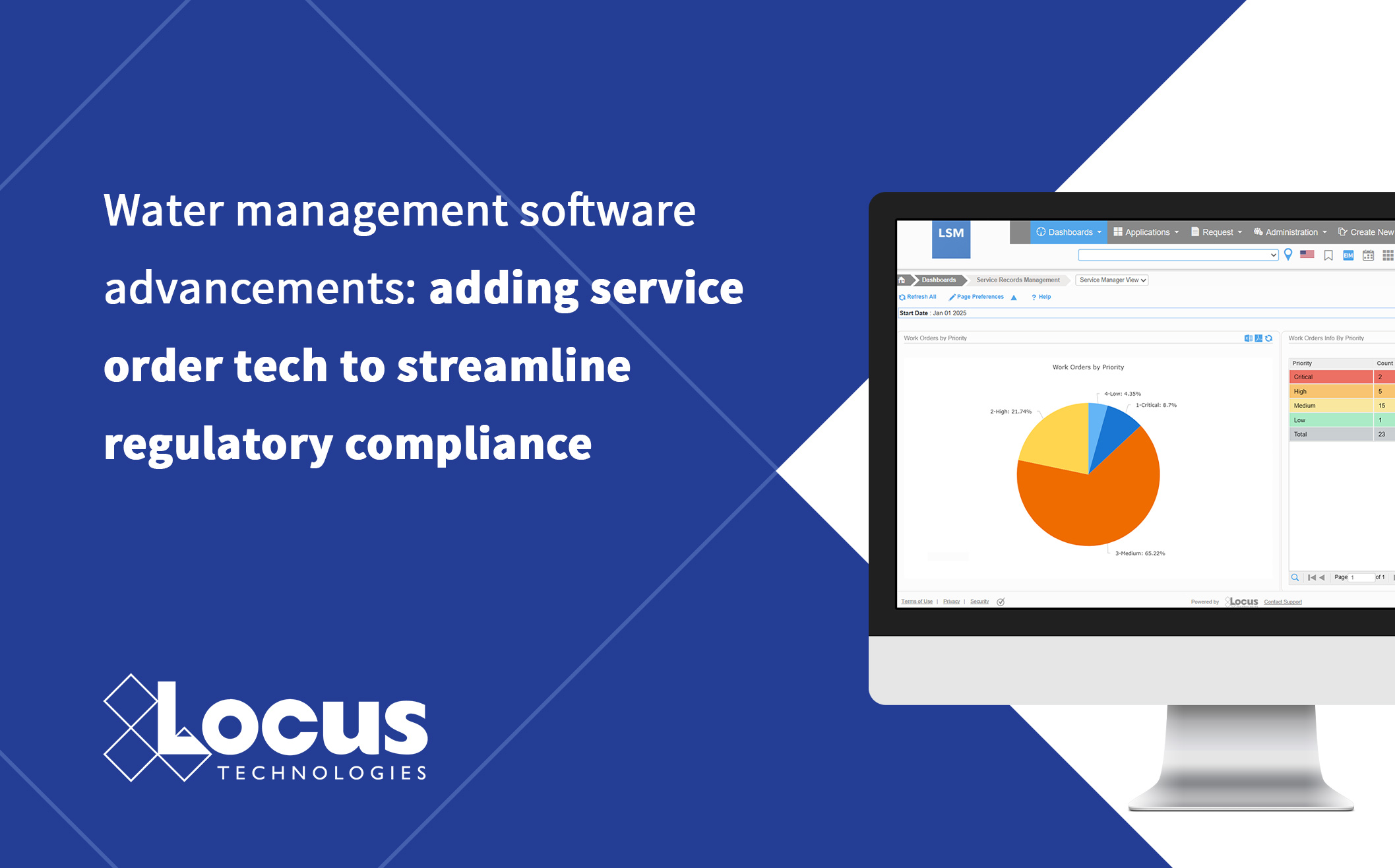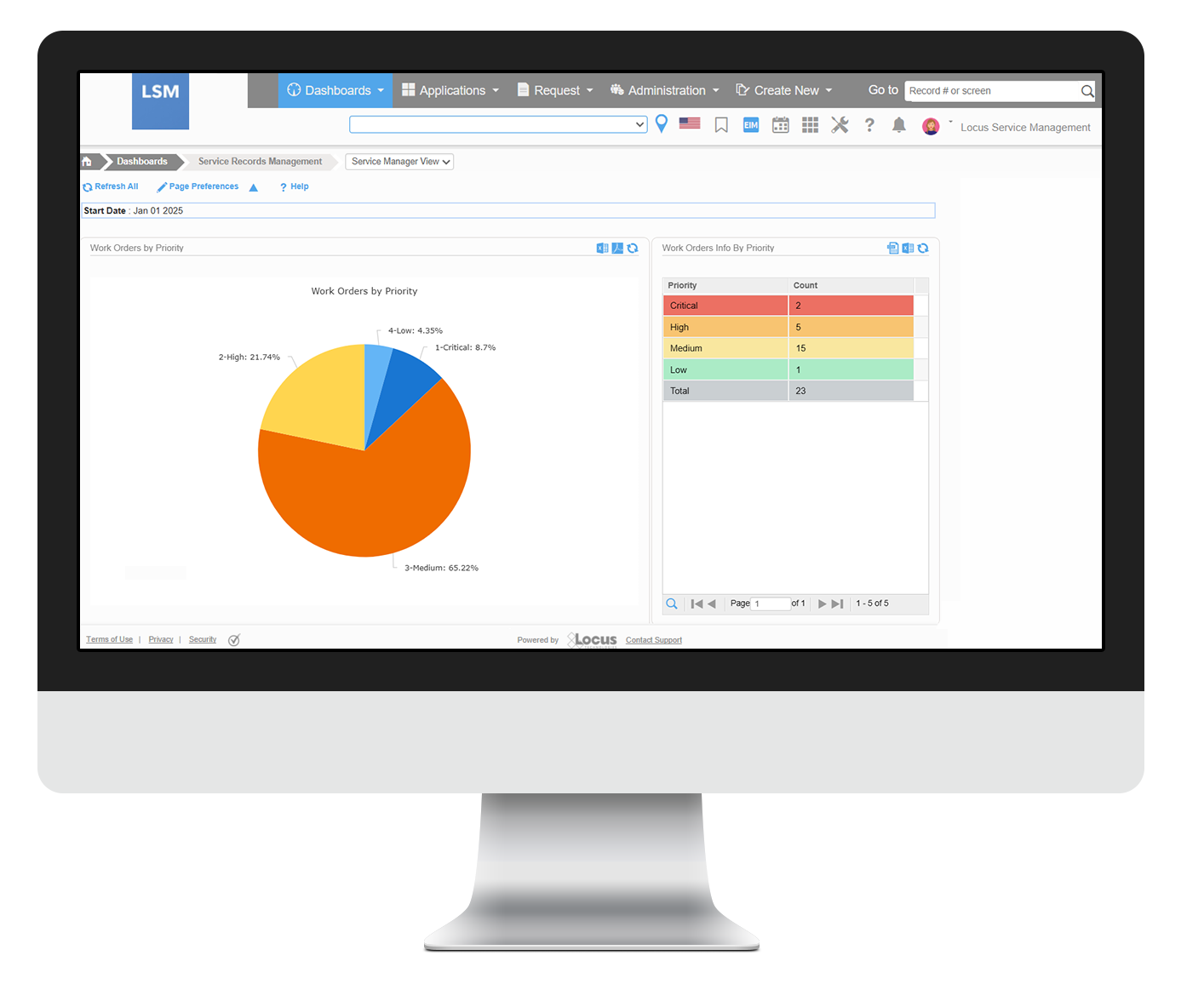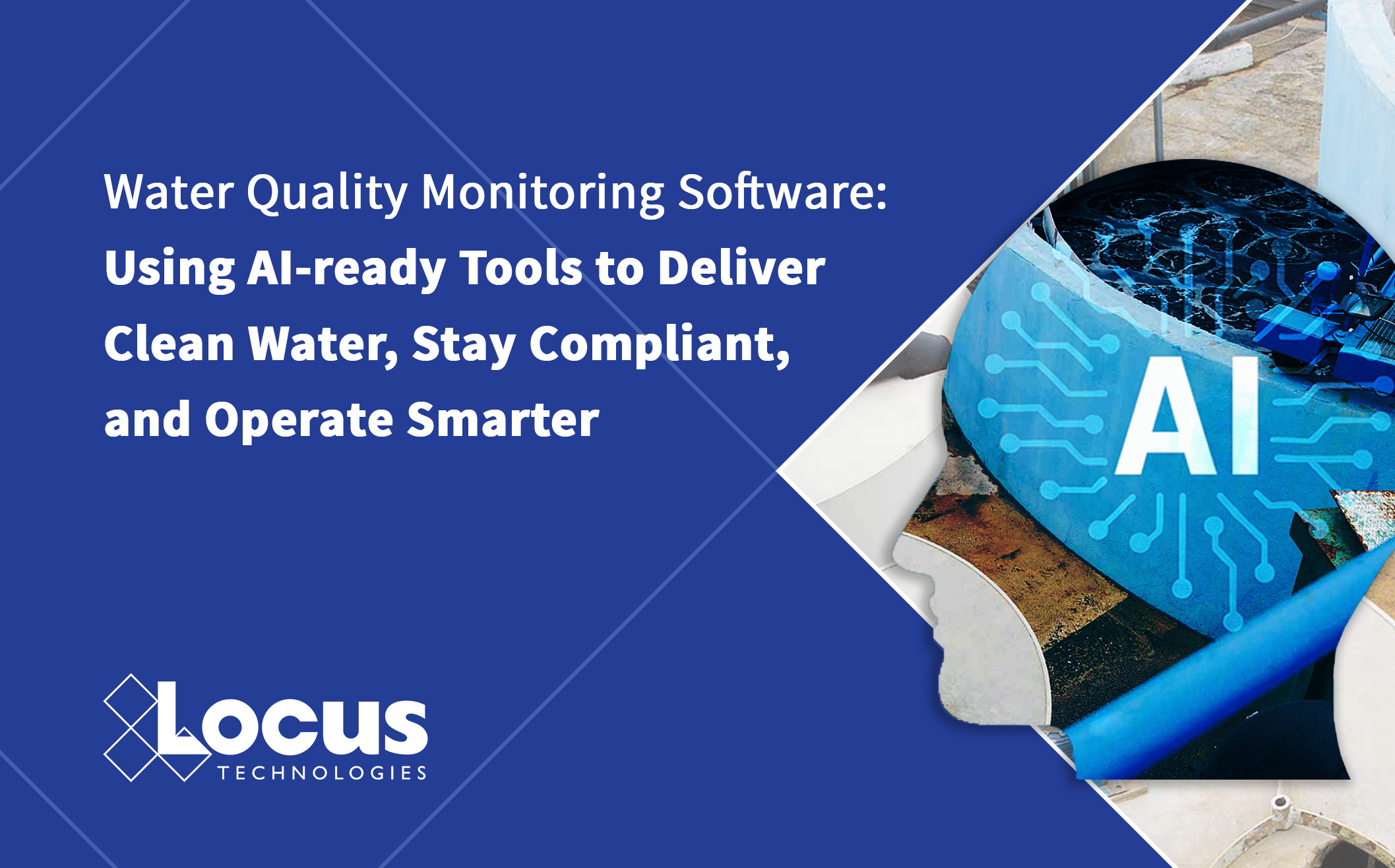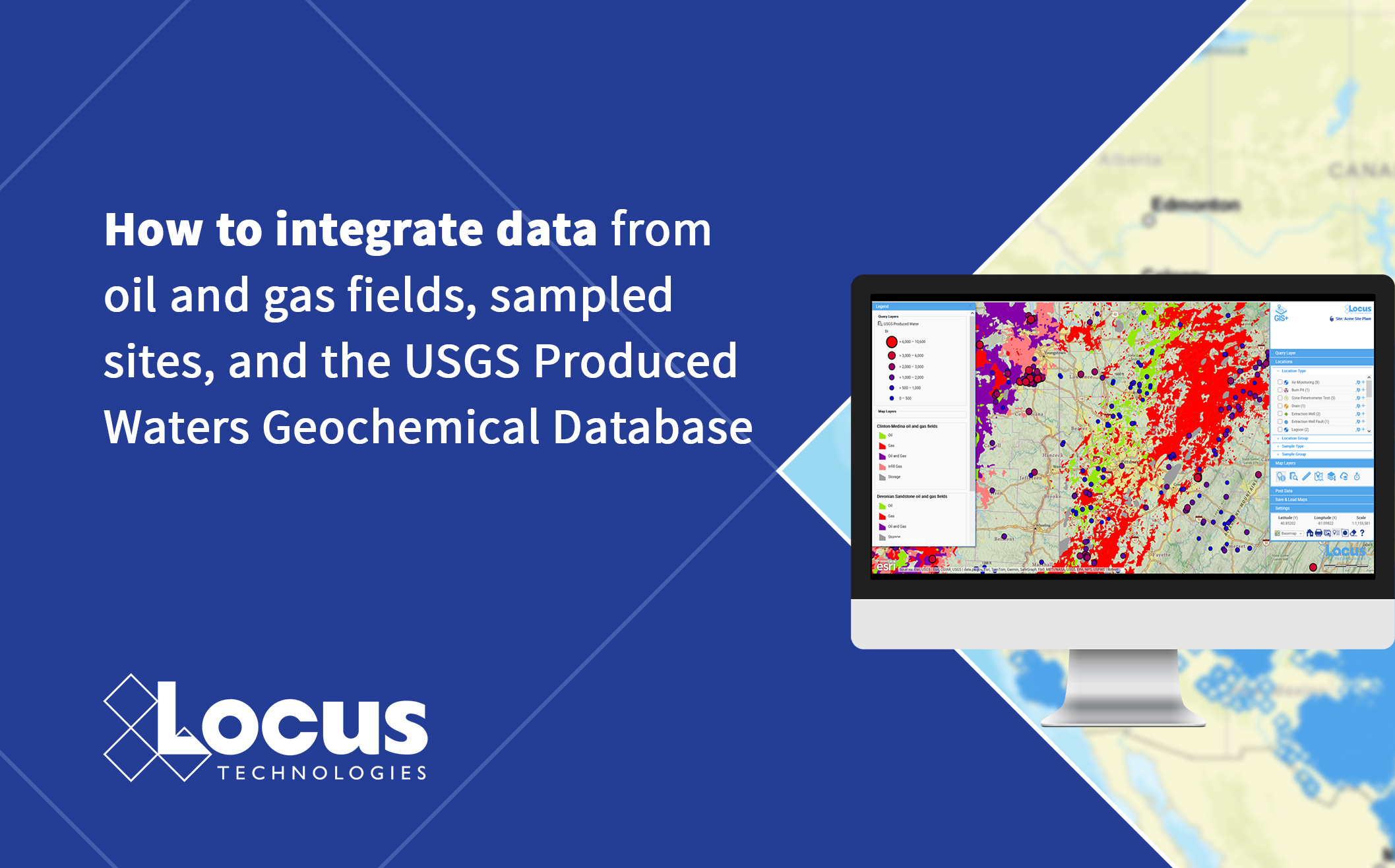
In the world of water utilities, regulatory compliance isn’t just a checkbox—it’s a continual process that ensures public safety, environmental health, and operational accountability. With ever-evolving regulations from local, state, and federal bodies such as the EPA, staying compliant can feel like a moving target. This is where service order management (SOM) comes in—not just as an operational necessity, but as a strategic compliance tool.
That’s why Locus Service Order software seamlessly connects with Locus Water compliance applications. When a compliance issue is identified—such as a required field action or system check—Locus automatically generates a service order to initiate and track the necessary response. Whether the task involves on-site repair, sampling, or documentation, the service order is linked to the original compliance trigger, ensuring complete traceability. Each order records who performed the work, what was done, when, how, and at what cost, providing auditable proof of corrective action. This tight integration streamlines operations and strengthens compliance accountability across the water utility system.
Let’s take a broader view of how compliance professionals can use the Locus Service Orders app to enhance their water management software and meet regulatory requirements.

Automate Routine Compliance Tasks
Many compliance-related activities are repetitive and time-sensitive—think backflow prevention checks, hydrant flushing, valve exercising, or water quality sampling. With Locus Service Orders, these tasks can be automated into recurring work orders. By setting predefined frequencies and assigning responsibility, compliance managers ensure no activity is missed due to human error or scheduling lapses.
Plus, automated notifications and escalations help teams respond quickly if a service order isn’t completed on time, ensuring that compliance timelines are met.
Centralize Documentation and Audit Trails
One of the biggest compliance risks is poor documentation. Regulators often require evidence that specific actions were taken—who performed them, when, and how. Locus Platform captures this automatically. Each service order becomes a timestamped record, containing technician notes, photos, GPS tags, and even water test results.
In the event of an audit or inspection, this data is readily accessible, organized, and complete. No scrambling for paper records or faded logbooks—just clear digital trails that demonstrate accountability.
Integrate with GIS for Location-Based Compliance
Geographic Information Systems (GIS) are essential for mapping assets like valves, hydrants, and pipelines. Locus GIS+ can be integrated with our Service Orders app and Locus water management software, enabling compliance teams to manage service orders spatially. For example, if a regulation mandates that all hydrants within a 5-mile radius of a hospital be tested quarterly, GIS+ can help identify these assets and generate targeted service orders. This level of precision not only supports compliance but also improves operational efficiency by ensuring resources are deployed effectively.
Customize Workflows to Mirror Regulatory Requirements
Different regulations require different workflows. A boil water advisory, for example, might trigger a cascade of actions: notification to the public, immediate testing, increased sampling frequency, and final clearance testing. With Locus Service Orders, these workflows can be built into custom service order templates. Each step becomes a trackable task, assigned to specific personnel and escalated if not completed. Such predefined workflows reduce the risk of missteps during high-pressure events and ensure that all regulatory boxes are checked.
Improve Data-Driven Decision Making
Compliance isn’t static—it evolves. Analyzing service order data over time reveals trends that can inform proactive compliance strategies. For instance, repeated maintenance issues on a certain pipeline may indicate a need for replacement, or seasonal sampling data might suggest the need for adjusted treatment protocols. Our Locus Service Orders app along with our water management software helps users anticipate rather than react to compliance risks. Ultimately, water utilities can stay ahead of regulations and avoid penalties or service disruptions.
Enhance Team Accountability and Training
Locus Service Orders software assign tasks to specific team members, tracks performance metrics, and logs completion data. This visibility helps compliance managers identify gaps in training, monitor workload distribution, and ensure accountability. For example, if service orders for cross-connection inspections are consistently delayed, it may indicate a need for additional staffing or clearer SOPs.
Service order management is no longer just a tool for scheduling maintenance—it’s a cornerstone of regulatory compliance for modern water utilities. By automating tasks, centralizing documentation, integrating with GIS+, and building compliance-specific workflows, Locus Service Orders along with Locus water management software provides the structure and clarity needed to navigate the complex regulatory landscape. For water compliance professionals, adopting a strategic approach to work orders is not just smart—it’s essential.
Locus is the only self-funded water, air, soil, biological, energy, and waste EHS software company that is still owned and managed by its founder. The brightest minds in environmental science, embodied carbon, CO2 emissions, refrigerants, and PFAS hang their hats at Locus, and they’ve helped us to become a market leader in EHS software. Every client-facing employee at Locus has an advanced degree in science or professional EHS experience, and they incubate new ideas every day – such as how machine learning, AI, blockchain, and the Internet of Things will up the ante for EHS software, ESG, and sustainability.



